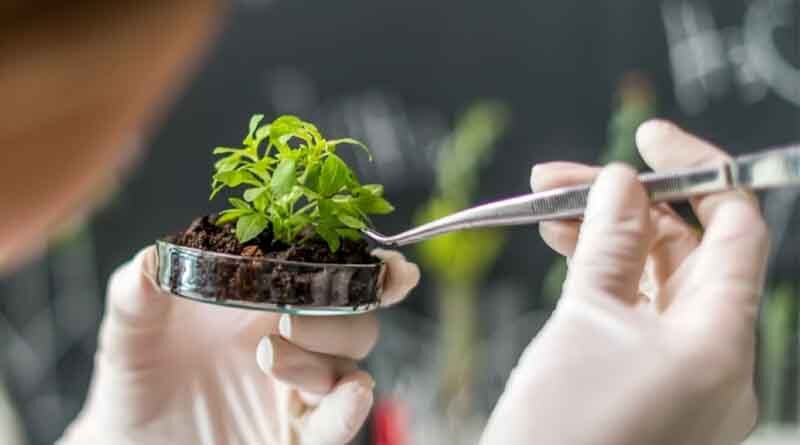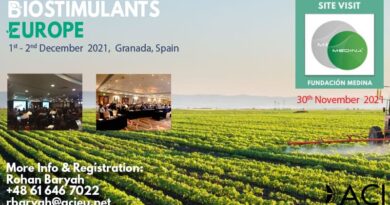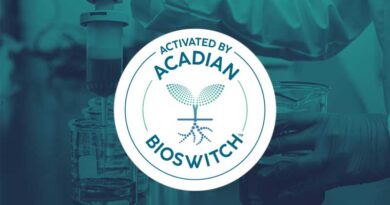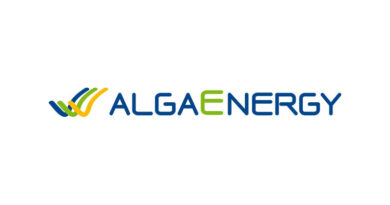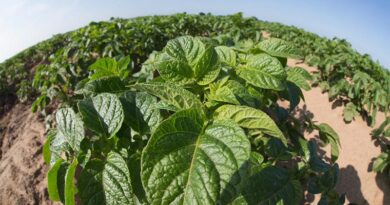Biostimulants for Plants – Giving Nature a Nudge!
10 August 2022, Israel: In agriculture, researchers and growers are always looking at new technologies and management practices to positively contribute to plant growth and tolerance to stressors. One of the more recent areas that are being considered is that of biostimulants. Scientists worldwide are exploring the advantages that this unique range of substances can provide to supplement current fertilization practices and applications.
Beyond fertilizers -What are biostimulants for plants?
Occasionally, Mother Nature needs a nudge to perform optimally. Plant biostimulants do just that!
But what are biostimulants for plants? Biostimulants tend to be categorized based on their ingredients’ functions. These organic, inorganic, or microbial components are what have the capacity to modify physiological processes of plants.
Plant biostimulants work to activate processes in the soil or within the plant, resulting in better nutrient availability, improved tolerance to abiotic stresses, increased yield, and enhanced quality traits.
Other benefits of using biostimulants include
- Better production, increased, retention and lifespan of the flower
- Enhanced nitrogen fixation
- improved rooting
- Higher germination rate
- Healthier foliage
- Higher fruit quality
- Increased shelf life
What is abiotic stress?
Abiotic stress is a negative impact of non-living factors on plants, e.g., extreme temperatures, drought, salinity, heavy metals, and high radiation. Abiotic stresses are harmful to plant growth and development and lead to reductions in crop yields worldwide. While one cannot completely predict and protect plants from abiotic stresses, we can equip them with products, such as biostimulants, that have the potential to enhance their tolerance to these stresses.
Types of biostimulants
- Amino acid
Amino acids are the building blocks of proteins. As biostimulants, amino acids can increase protein manufacturing in plants to influence processes such as N uptake, plant signaling, and C:N metabolism.
- Humic and fulvic acids
Humic and fulvic acids occur naturally in the soil as a result of organic matter breaking down. Organic matter is a commonly used measure of soil fertility, as it affects the overall physical, physio-chemical, chemical, and biological properties of the soil, and in turn, the plants growing in it. Humic acid can improve soil health and growth, while fulvic acid can influence the plant’s absorption and use of available nutrients.
- Seaweed extracts and botanicals
Seaweed-based biostimulants belong to the brown algae and red seaweed families. They can be applied to soils, in hydroponic solutions, or as foliar treatments and contribute to gel formation, water retention, and soil aeration. Seaweeds are also known to contain appreciable quantities of Plant Growth Regulators (PGRs).
Botanicals are substances extracted from plants that are used in pharmaceutical, cosmetic, food, and plant protection products. These have more recently been used as biostimulants due to their active content known as allelochemicals or secondary metabolites, which are receiving increasing attention in the context of sustainable crop management.
- Beneficial fungi
Plants and fungi have co-evolved since the origin of plants and the concept of mutualism or symbiosis.
Fungi interact with plant roots in different ways, forming mutual symbiosis when both organisms live in direct contact with each other and establishing mutually beneficial relationships.
- Beneficial bacteria
Bacteria interact with plants in all possible ways. Bacteria can be involved with the nutrients supply, increased nutrient use efficiency, induction of disease resistance, enhancement of abiotic stress tolerance, modulation of morphogenesis by plant growth regulator
- Inorganic compounds
Some elements, such as Al, Ca, Na, Se, and Si, are present in soils and plants as different inorganic salts and in insoluble forms. These elements can promote plant growth, but are not essential, unlike macro-nutrients. Beneficial functions of these inorganic compounds include the strengthening of cell walls, osmoregulation, and hormone signaling.
Biostimulant market
The global plant biostimulants market is estimated at $ 3.2 billion in 2021 and is expected to reach a value of $5.6 billion by 2026 (Markets and Markets).
In terms of products, the amino acids segment has the largest market share in value.
Liquid biostimulants for seeds
Modern technology provide a delivery system for several materials including biostimulants, nutrients, and plant protectants. These are all aimed at protecting and enhancing seed and seedling performance in terms of germination, growth, and development.
Biostimulants applied as liquid seed treatments are cost-effective and provide immense potential to enhance stand establishment compared to foliar and soil application methods.
Biostimulants for lawns
Who doesn’t love a healthy green golf course or track?
Biostimulants used in lawns and turfs exert a positive impact on grass metabolism, stimulating cytokinin and auxin, both known plant growth and development hormones. Biostimulants can also reduce the negative effects of pathogen infestation and adverse environmental conditions like drought, salinity, or temperature fluctuations by helping the turfgrass develop a stronger defense system
Turf quality and color can be improved by the application of specific amino acids and have been shown to produce turf quality like that achieved by mineral fertilization.
A quality seaweed extract for turf is a complex product containing a range of plant-available micronutrients, amino acids, carbohydrates, and bioactive molecules.
You may be interested in reading:
Turf renovation and maintenance
Osmocote slow release fertilizer
What is Potash fertilizer
ICL and Plant Biostimulants
ICL is continuously investing in the research and development of innovative agricultural technologies to help improve crop yields with lower environmental impact. As a leading manufacturer of fertilizers and solutions for the Ag industry, ICL has developed a line of specialty products to help vitalize soil activity, increase tolerance to abiotic stress as well as better availability of nutritional elements for the plant, maximizing plant health and sustainable management practices.
Biostimulants help support natural processes in the plant, particularly when under stress.
ICL’s range of biostimulants are carefully formulated from metabolites derived from industrial processes such as fermentation. –Key components being amino acids, peptides, and vitamins. Our biostimulants for plants include the best ingredients in the bioregulators and biofertilizers market.
Advanced Fertilizers and these solutions have become an important part of the agricultural products offered to help maximize resource efficiencies, such as water and fertilizer usage.
The Future
There are still challenges accompanying biostimulants — a lack of a universally accepted definition, regulatory challenges, and a lack of full understanding of how the products work — to name a few.
High-throughput genetic analysis could facilitate the screening of new bioactive and signaling substances with biostimulant properties and provide biochemical, structure-function outcomes and metabolomic gateways to the mode of action.
Scientists are focusing on the development of the second generation of these products, Biostimulants 2.0 with specific synergistic action through the application of both microbial and non-microbial plant biostimulants to render agriculture more sustainable and resilient.

